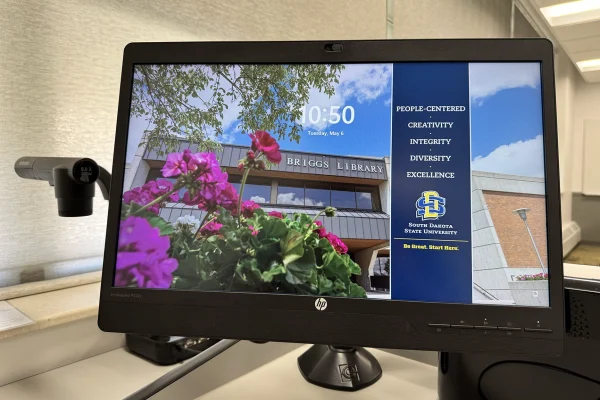Indoor facility one step closer to reality
August 28, 2012
Before preliminary planning for a new indoor athletic facility at SDSU began over a year ago, the project seemed distant in the future.
After $18 million in donations, the university is closer than ever to transforming its athletic landscape.
With a $10 million donation from Sanford Health and $8 million from anonymous donors, SDSU could put a shovel in the ground this spring to start constructing the planned Indoor Practice and Human Performance Athletic Facility north of the Dykhouse Student-Athlete Center.
Being this close — now $6-$10 million away from the building becoming a reality — means the university can get serious about fundraising, and the university has by creating videos and a new website featuring the project’s perks.
“We’ve had a lot of designs on projects over the years, and we just haven’t been able to get over the hump,” SDSU Athletic Director Justin Sell said. “I think everyone knows with our climate and what we need to get done, we’ve got to have quality practice space for our student-athletes, and so to get $18 million and $10 million of that from Sanford and to be able to partner with them on the care and treatment of our student-athletes will take us to another level.
The project will still be subject to South Dakota Board of Regents’ approval before construction can officially begin. The school hopes it can get the project through the legislature this spring and with a goal to open the facility Fall 2014.
As part of the commitment from Sanford Health, the Dakotas-based health care company will now provide the Jacks with sports medicine services for the next 10 years, replacing Orthopedic Institute of Sioux Falls.
“We are proud to align with SDSU, and the investment we have made toward the construction of this new facility is the first step in our long-term commitment to the championship excellence the university has put into motion,” said Sanford Health President and CEO Kelby Krabbenhoft in a statement. “The ability to provide customized service and coverage to SDSU and all our partner schools will yield incredible collective insights and support from the combined knowledge and resources we bring to bear.”
The building will include an 80-yard football field with synthetic turf, encompassed by a 300-meter, eight-lane track and room for 500 to 1,000 spectators. Aside from the athletic aspect, the building will have space for medical equipment, including hydrotherapy and rehabilitation and the expansion of weight and training rooms.
Sell hopes the last chunk of donations can spur the university onward with the project, the likes of which would only be matched by Youngstown State in the Missouri Valley Football Conference, although USD, NDSU and Northern Iowa all have domes where they can potentially hold practices for indoor sports. He said the school will return to previously interested parties to see if they can bring in the final donations.
“[The donations] really show the support for what we’re trying to accomplish has come a long, long way. But we also realize that this is just the start and we have to finish this thing,” Sell said.
For now, the excitement about what could be continues to mount.
“It’s a game-changer,” Sell said. “We’ve celebrated 50 years of Coughlin-Alumni Stadium, and 40 years of Frost Arena is approaching. When you think about what this building can do for us at SDSU, it’s pretty exciting.




















